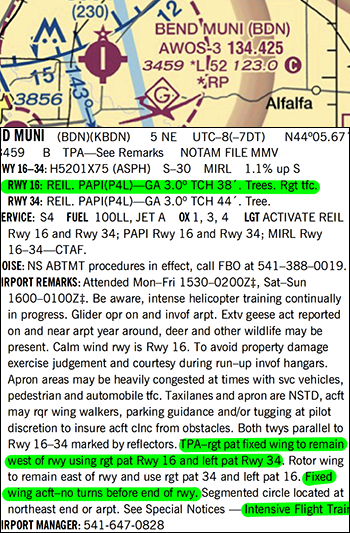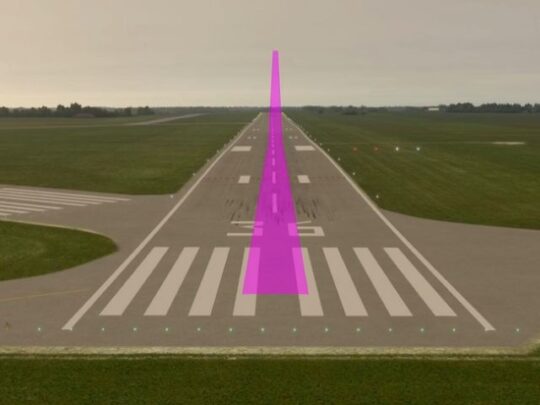Subscriber question:
"I'm prepping for my Private Pilot Checkride with questions my CFI gave me. One was how to fly the pattern at Bend, OR—where there's just an asterisk before RP. I know RP 16 would mean right traffic for 16, but what does *RP mean?" —Paula P.
Jeff:
 “First, kudos to your instructor for giving you a good list of questions to practice for the test.
“First, kudos to your instructor for giving you a good list of questions to practice for the test.
*RP means there’s right traffic for at least some runways under at least some circumstances, and you’ll need to check the text in the Chart Supplement for details. For Bend Municipal (KBDN), it says that fixed-wing aircraft should use right traffic for Runway 16 and left traffic for Runway 34. Rotor wing aircraft should do the opposite: left traffic 16 and right traffic 34. Translation: fixed-wing traffic should stay on the west side of the airport and rotor-wing traffic should stay on the east side.
The note that there’s intense flight training here explains why. There are probably so many student pilots in R22 helicopters that a local procedure was established. Note as well that there are no early turns off the upwind/departure leg or downwind leg for fixed-wing aircraft, presumably to reduce the collision hazard.
Not too far away at Independence State (7S5) you’ll see the same *RP, but here it means that gliders and ultralights should fly right patterns to both runways. So you can’t assume this means the same thing in all cases. An app like ForeFlight usually gives the pattern for fixed-wing in its basic runway information, but you’ll still only find the details in the supplement text.
Two more bits related to your question: One is that helicopters often fly right traffic opposite airplane left traffic, even when there is no official procedure because they are required by regulation to avoid the flow of fixed-wing traffic.
The other is that you should get a copy of the Aeronautical Chart Users Guide either on your tablet, or in hard copy, before your checkride. This is the Rosetta Stone for all government charts. If you get a stumper question during the ground portion of the exam, you can say, ‘I don’t know what that means, but I know where to find the answer.’ That’s a perfectly acceptable response, even on a checkride, which should (hopefully) please the examiner.
Nobody knows all the answers. What’s most important is knowing how to find out.”
To see a pilot find a grass airfield using only pilotage and then use a modified right pattern to avoid glider traffic, see this clip from Real World VFR.
How often do you read the actual Chart Supplement entry for an airport you're visiting for the first time?

